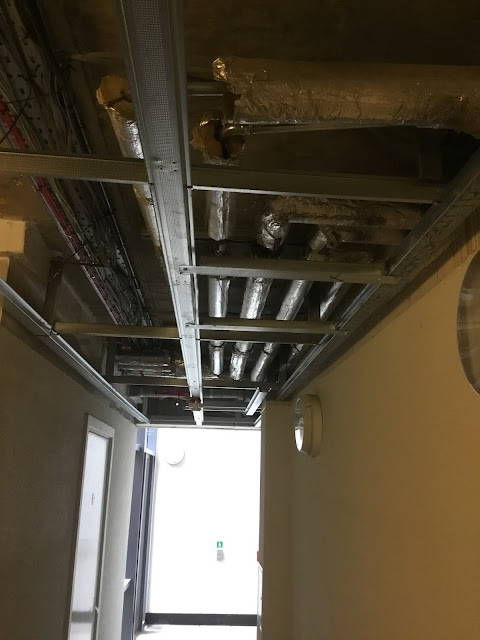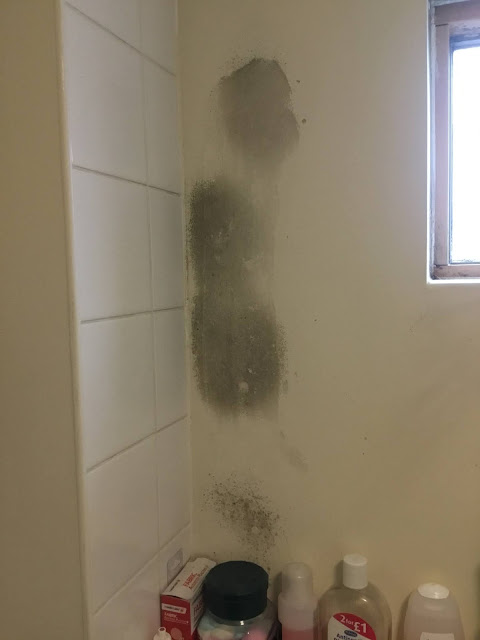Cambridge Gardens, Kilburn July 2021 (Kilburn Times)
The Westbourne 1790
The culverted Westbourne
Sign in the former Bird In Hand Pub, West End Lane
Guest blog by David Walton of FLASK (Flood Local Action South Kilburn. The views expressed are those of the author.
The raw sewage river flooding 'major incident' of July 2021 in South Kilburn and North Westminster, has meant
that scores of residents are still housed in temporary accommodation, claims
are being made and homes are being dried-out and repaired. Why did this
happened? Who pays now and for future major floods?
Householders should beware that new experiments, regressions,
crisis and disruptions are being
knowingly allowed in specific new city zonings. In starting to examine this
'major incident' covering Environment Agency policies, unsound growth area, tall
buildings, very large site zonings, local flood authority responsibilities,
planning law and emergency planning, a
complex picture of government and political indifference emerges with baked-in environment/ climate
denial in regard to the South Kilburn Estate version of 'build back better'
where five times the number of homes it had in the year 2000 are being towered,
forced and packed onto the River Westbourne's flood plain by year 2041.
The key strategic decision change seems to have been around 20
years ago when the Environment Agency chose, as does the Greater London
Authority and Brent Council, that developers could totally deny the existence
of the River Westbourne and its tributaries running underneath South Kilburn.
Note that South Kilburn's river delta shape is still apparent today and also
how early nineteenth century maps of South Kilburn show these rivers set in
dairy farm fields, rivers which though in culverts for over 100 years now are
natural and still very much here, live and ever present however much denied by
government, agencies and politicians.
Taking the Environment Agencies lead and despite all too apparent
on site water facts, for Brent Local Flood Authority the River Westbourne and
its tributaries simply do not exist anymore (see clause 6.55 Brent Strategic
Flood Risk Assessment 2007). A Strategic Flood Risk Assessment process is meant
in law to be a 'live' document yet seems to have been rather abandoned at Brent
Civic Centre. How 'live' these rivers become in the major incident
investigation of 2021 for South Kilburn 'very large site' will be public
knowledge soon.
For example, of neighbouring local authorities: Kensington and Chelsea
Strategic Flood Risk Assessment highlights the River Westbourne as its second
major flood risk after the River Thames and marks the entire river course and
tributaries from Hampstead Heath down to the Thames at Chelsea. Camden
Strategic Flood Risk Assessment map helpfully indicates historic flooding of
South Kilburn and maps how the south west of Camden drains down into South
Kilburn vale in Brent. The City of Westminster Strategic Flood Risk Assessment
map helpfully indicates historic flooding of Chippenham Gardens, South Kilburn
located north of the Westminster boundary.
Since first being built on in the mid nineteenth century South Kilburn
was notorious for its flood risk to homes and this kept the area unpopular with
new houses being difficult to sell and poverty concentrated there. This memory of urban
trauma inspired progressive architects and planners post World War 2 to protect
and transform this flood risk and literally bad land by building a new public
owned estate of housing for 6,000 people, with social and health infrastructure
set in an impressive recreational parkland of public owned flood defences where
flood water could stand, pool and be absorbed by woodland environments
naturally- a major London success much celebrated at that time.
The protection/ sustainability long-term problem for this massive
public investment however was that all public owned estate community new
diverse specific land uses were and remain unregistered at the UK Land Registry
and later 1970's phase built large panel blocks were unmortgageable as they had
catastrophic build defects baked-in.
From year 2010 the South Kilburn Growth Area with its green parkland
public flood defences total removal policies and resultant ever increased flood
risk being manufactured, led to a deal being struck with Westminster. The then
City of Westminster Plan highlighted the South Kilburn Growth Area policy as
being a major risk to its residents.
So, to protect Maida Vale/ North Westminster in 2015 a £17.5 million
flood defence mitigation scheme was built by Thames Water in the form of two
large underground rivers flood sewage storage reservoirs sited within North
Westminster. However, July 2021, one month’s worth of rain fell in one hour and
the River Westbourne and its tributaries sewage waters rose above ground on to
streets and flowed into ever reduced flood protections South Kilburn and then
horror on into £17.5 million extra flood protection designed North Westminster
homes as well! South Kilburn is become a sinking sink and is now proof positive
that rivers sewage flood risk, crisis impact and misery can't be neatly
corporate zoned in by design anymore.
Government responsibility finally has to be taken and the River
Westbourne and its tributaries need to be recognised as existing acknowledged
as a real problem again for politicians, public servants, shell company
freeholders and developers. Often already off-shored and hard to trace new
owners of South Kilburn enclosures/ towers built on former public owned flood
defences already will certainly not accept responsibility for the massive costs
involved in totally predictable and accelerating future major flood incidents.
After all the Environment Agency ‘disappeared’ the River Westbourne and its
tributaries in South Kilburn, so that is the current 'live' get out of jail
free card/loophole still in place legally for South Kilburn developers. Instead
help-to-buy and affordable rent families will have to pay government backed
massive repairs loans and forced to pay increased charges. The parallels here
with the ongoing inflammable building materials crisis facing leaseholders and
tenants since the Grenfell fire disaster are remarkable - a predatory political
forward strategy of government by debt in South Kilburn tall building zone?
Build back inflammable, build back no health and social wellbeing
infrastructure to be retained and build back wetter!
Granville New Homes was built on Granville Road Public
Open Space which was designed as a major South Kilburn flood defence and Higgins
are building at Chippenham Gardens in 2021, taking part of another flood fence
open space.
The positive news
October 2021 is that half of South Kilburn’s public owned green flood defences
still exist and function (hence not all of South Kilburn was flooded), even
though in parallel they are also Brent 'site allocations' in the unsound as
proposed Brent Local Plan towards 2041 (where flood defences are all to be
denied and total destroyed). Strong legal protection of the remaining flood
defence system for South Kilburn is still possible, while flood defences
already market destroyed can and should be urgently restored to raise flood
protection back to where it was back in year 2000 as the humane bare minimum.
What is the massive Community Infrastructure Levy already raised inside South
Kilburn from private developers for if not also to reduce rather than grow
multiple deprivations for people living in this zoned experiment in mega
population density?


















